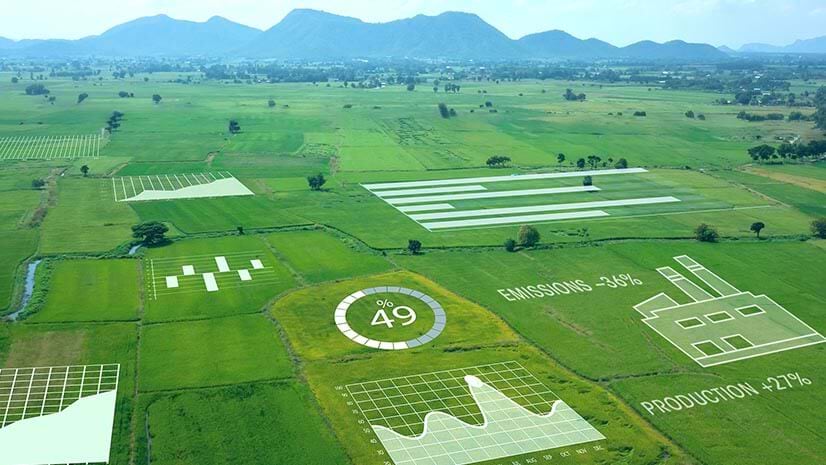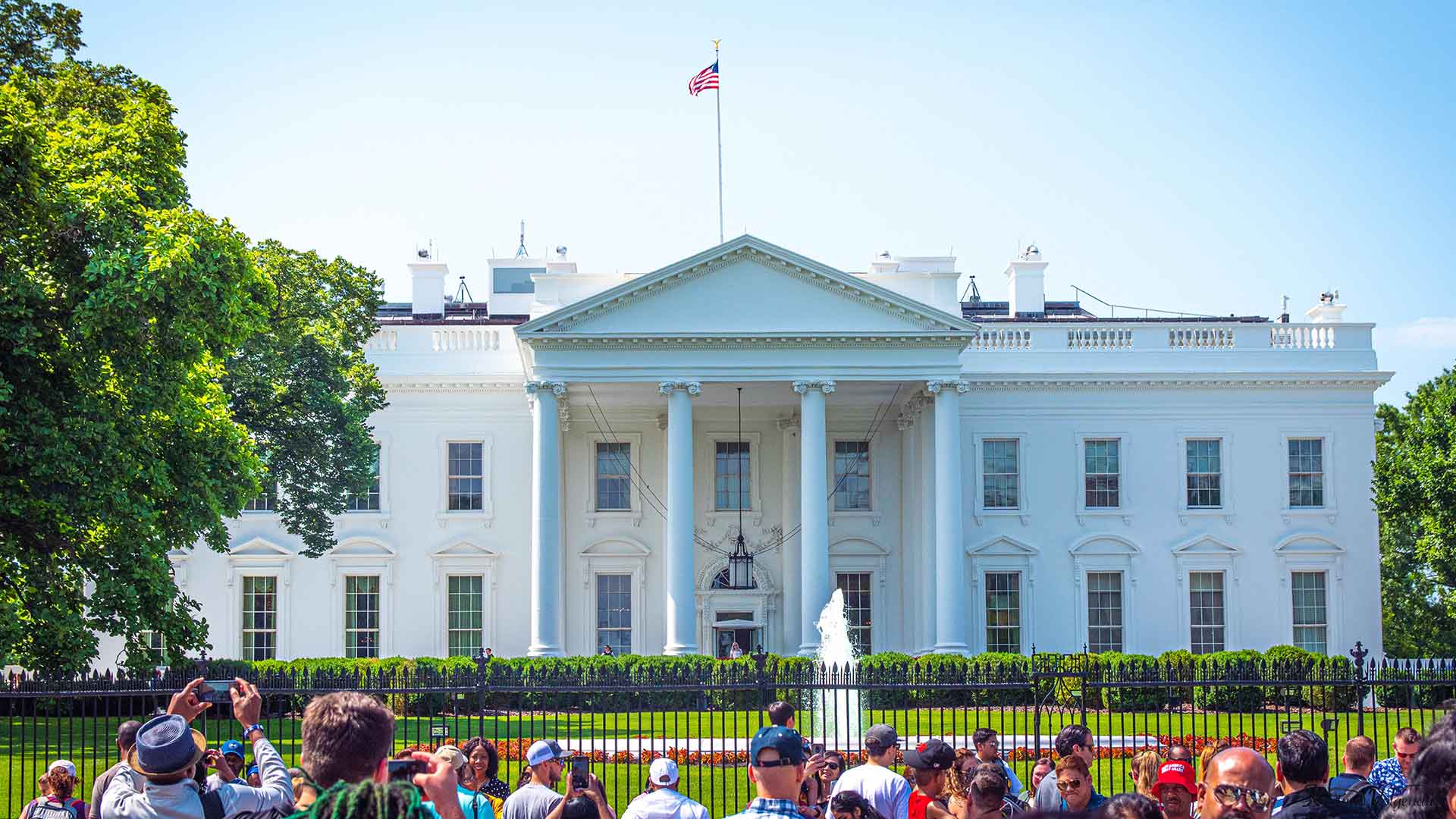President Joe Biden’s pledge to halve the United States’ carbon emissions in less than a decade has sent a clear signal that we are living in a climate and time of change.
The magnitude of the global climate threat has become undeniable and the world’s political leaders—40 of whom joined Biden at a virtual climate summit in recent days—have acknowledged as much by setting aside geopolitical rivalries and reiterating pledges to address climate change.
Now comes the hard work—and the opportunity—of changemaking for leaders in business and technology.
Biden’s target is one of the most ambitious, and nearly doubles the goal established by President Obama during his time in office. Meanwhile, China aims to hit peak carbon emissions by 2030 and reach net zero carbon dioxide emissions by 2060. Japan, France, the UK, and a host of others have set policies for reaching net zero emissions by 2050.
Perhaps for the first time on the long road to climate awareness, their tone is matched by that of the business community. We hear it in the growing push for climate-related financial disclosures and the rise of stakeholder capitalism—an accelerating urgency for more responsible ways of doing business and creating value.
In short, climate resistance has become passé; action is the new corporate prescription. Business executives with the power to shift industries are staking corporate identities on strategic and operational innovations that would have been anathema five years ago:
- GM will convert its entire lineup to electric vehicles by 2035, ending a century-plus love affair with the internal combustion engine.
- BP is embracing new forms of energy in an industry long dependent on carbon-based fuels.
- Walmart intends to power its facilities exclusively with renewable energy by 2035.
Their commitments and those of their industry peers will be instrumental in actualizing the goals of President Biden and other political leaders. As more corporate leaders seek new efficiencies and more sustainable business models, it’s clear that technology will be vital to advance our climate-related ambitions.
Paths to Ambitious Climate Goals . . .
In announcing his goal for greenhouse gas emissions, President Biden left many details unsaid, telling reporters that a climate roadmap was in development. But the administration did deliver a statement to the United Nations outlining “pathways” to the 2030 goal. At the heart of each pathway are the people, places, and priorities critical to stemming climate impacts.
What’s noteworthy about these three components is that companies around the world are already having success tracking and monitoring them by using location intelligence generated by GIS technology. A quick review of several of Biden’s pathways shows how.
In Utilities and Energy . . .
Electricity: The United States has set a goal to reach 100 percent carbon pollution-free electricity by 2035, which could be achieved through multiple cost-effective technology and investment pathways.
Companies like Equinor and Ørsted have shown the profitability of transforming business models to be more sustainable. Ørsted was once one of Europe’s most coal-intensive energy producers, while Equinor’s history as an oil producer helped make Norway wealthy. Both companies have transitioned away from fossil-fuel legacies, and found business advantage on the other side. Location intelligence from a modern geographic information system has been playing a key role in both of their transitions, and will guide other companies’ sustainability efforts in the days ahead. For their part, Equinor and Ørsted are using GIS technology to scout locations for wind farms, solar installations, and other energy sources. Elaine Farne, technical director at Equinor, explained the application in a WhereNext article:
GIS data provides the teams a benchmark across renewable projects, Farne says. “You have an immediate impression of whether you’re competitive and where you stand in terms of cost in relation to production.” This helps ensure a positive ROI.
In Transportation and Logistics . . .
As corporate leaders take up the imperative of sustainable business models, they’ll look for opportunities that also nurture the bottom line. For a variety of industries, location intelligence has been a trusted resource to guide those decisions.
Transportation: The largest sources of emissions from transportation are light-duty vehicles like SUVs, pickup trucks, and cars, followed by heavy trucks, aircraft, rail, and ships. These transportation modes are highly dependent on fossil fuels, with more than 90 percent of transportation energy use coming from petroleum.
Long before the climate impacts of transportation were widely recognized, corporate leaders worried about supply chain inefficiencies, which exacted a cost in fuel, work hours, and ultimately customer satisfaction. Now they’ve added sustainability concerns to those bottom-line motivations. That’s partly why companies like UPS use location intelligence to route trucks more efficiently. Algorithms embedded in GIS software help save UPS 100 million miles of driving each year, equivalent to approximately 100,000 metric tons of carbon dioxide emissions.
Transportation networks are vast and global, making a sustainability overhaul possible only through the work of many actors, from private sector companies like UPS to individual citizens. In cities like Austin, Texas, utility companies are doing their part to change transportation for the better. Austin Energy, recently named the most advanced utility in clean power by the Smart Electric Power Alliance, is contributing to sustainable transportation by delivering energy to electric vehicles. The company is using GIS to map out a network of electric vehicle chargers, placing them in areas of need—including traditionally underserved neighborhoods—so residents can take their own steps toward greener transportation.
In Architecture, Engineering and Construction . . .
Buildings: Building sector emissions come from electricity use, as well as fossil fuels burned on site for heating air and water and for cooking. There are many options to avoid these emissions while reducing energy cost burden for families and improving health and resilience in communities.
Taming the environmental impact of the built environment will be a massive undertaking. By some estimates, commercial real estate facilities contribute 40 percent of the world’s carbon emissions. To cut emissions, companies will need to first take stock—understanding where and what kinds of emissions sources exist in each of their properties. For many, that will mean bringing location intelligence indoors. Just as retailers, manufacturers, and logistics companies have mapped their physical assets to understand important patterns, property owners are using location intelligence within their own walls to track where and how operations are run. The first step in curbing a building’s emissions is knowing where its boilers and AC units are and what they produce. Smart indoor maps can reveal that information with help from IoT sensors, giving operations managers the intel they need to make more sustainable choices.
In Agriculture . . .
Agriculture and lands: America’s vast lands provide opportunities to both reduce emissions, and sequester more carbon dioxide. The United States will support scaling of climate smart agricultural practices (including, for example, cover crops), reforestation, rotational grazing, and nutrient management practices.
The Biden administration’s focus on agriculture as a pathway to reducing climate risk points to that industry’s sometimes overlooked role in the planet’s health. Better agricultural management practices could result in a 5 to 14 percent reduction in greenhouse gas emissions, according to a Pew Charitable Trust study. Some innovative thinkers have already formed companies that use location technology to create greener farming practices.
One standout is Indigo Ag, which uses sophisticated satellite imagery and GIS technology to analyze the carbon content of fields. With that hyperlocal intel, Indigo Ag advises farmers on healthier ways to tend their fields. The company has also begun consulting on carbon capture opportunities, helping farmers find economic advantage in sustainable practices.
World-changing goals are accomplished through a multitude of actions. In the context of climate change and sustainable practices, many organizations and leaders using location intelligence and a geographic information system have already made meaningful progress along President Biden’s pathways.
As the events of recent days have shown, now is a time for organizations and leaders to be bold. The good news is, there’s both greater awareness of the need for change and the arrival of technology to help achieve it.
To learn more, visit esri.com/en-us/c/corporate-programs/20/forrester-wave-climate-risk-analytics.
The Esri Brief
Trending insights from WhereNext and other leading publicationsTrending articles

December 5, 2024 |

July 25, 2023 |

February 25, 2025 |

November 25, 2024 |

April 1, 2025 |

November 12, 2018 |





